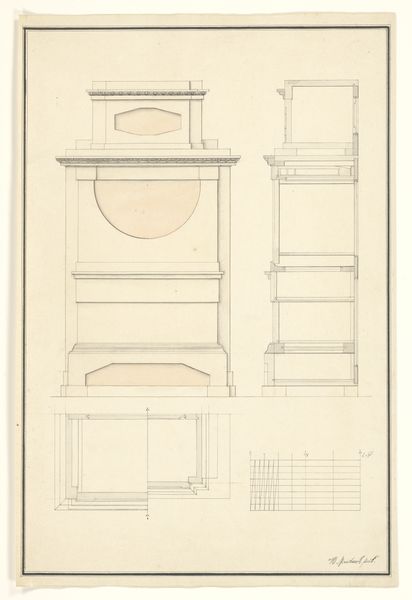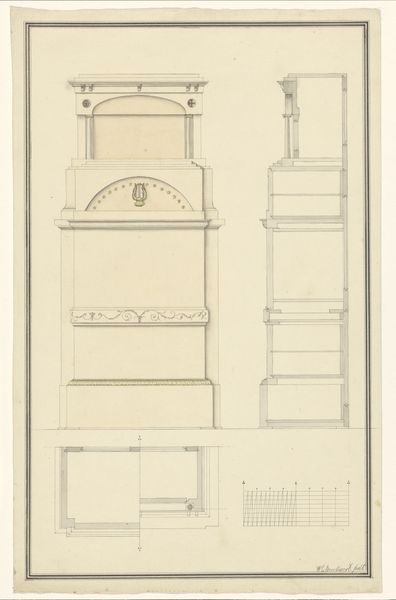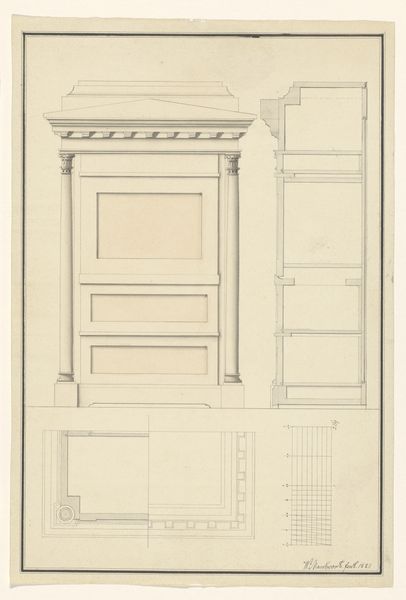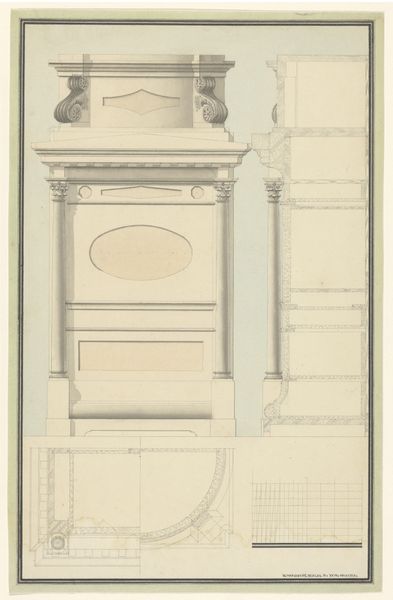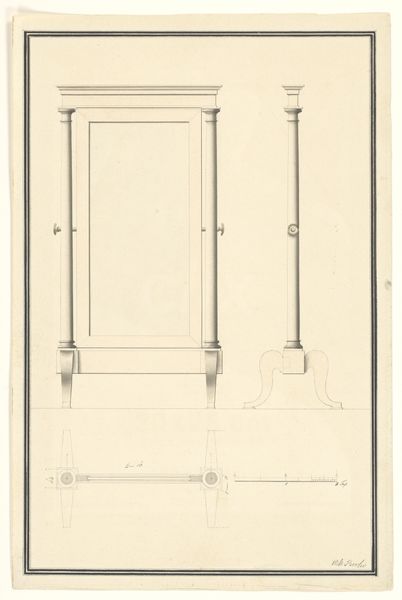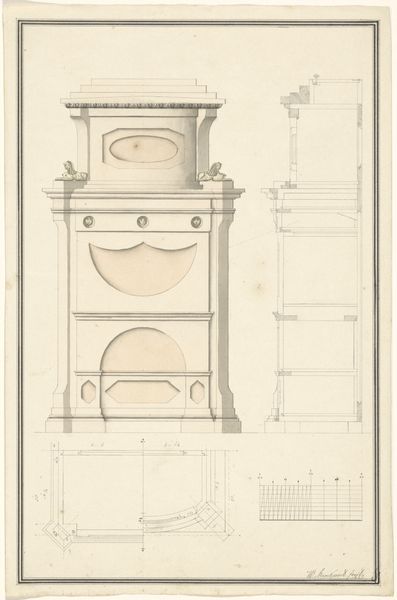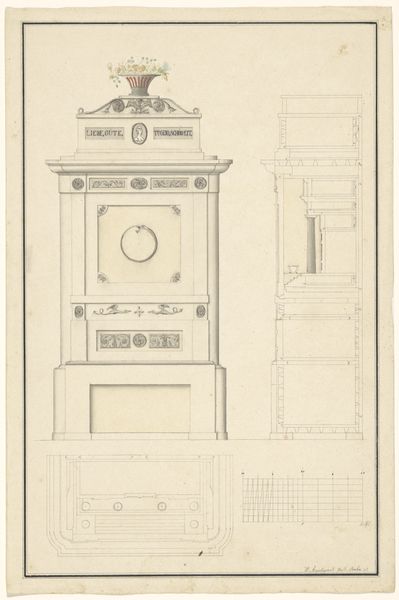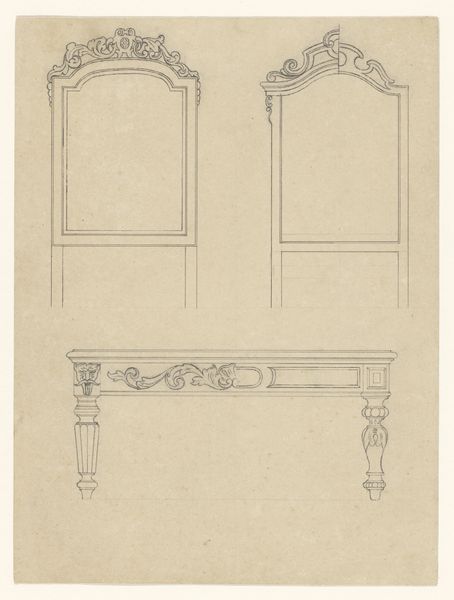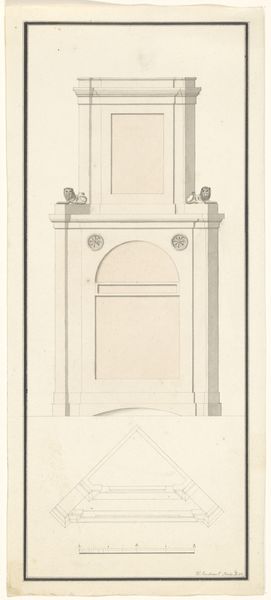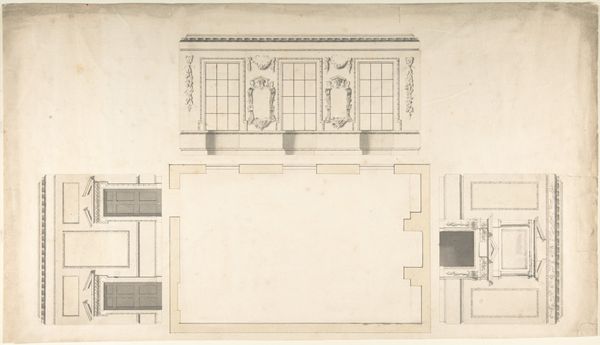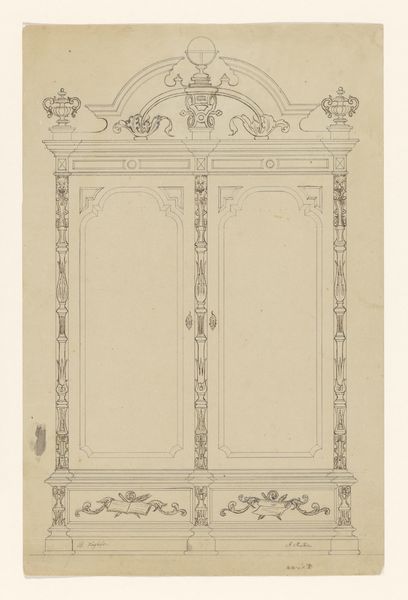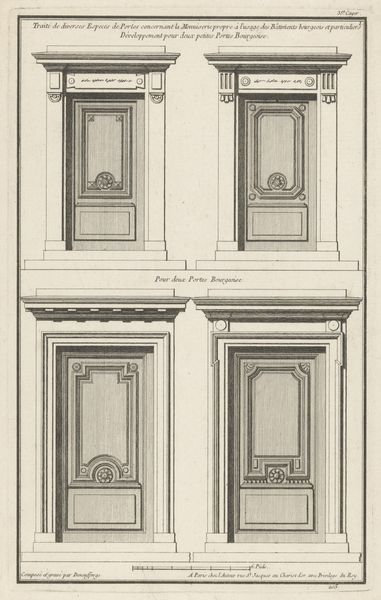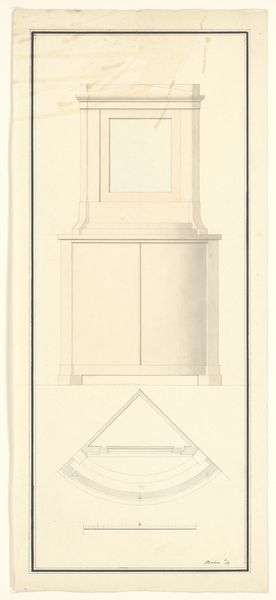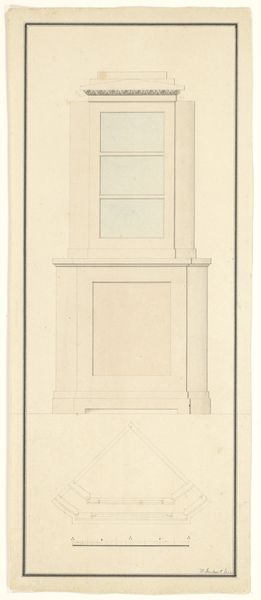
drawing, pencil, architecture
#
drawing
#
neoclacissism
#
architectural plan
#
architectural design
#
perspective
#
form
#
geometric
#
pencil
#
architectural section drawing
#
architectural drawing
#
architecture drawing
#
architecture
Dimensions: height 383 mm, width 261 mm
Copyright: Rijks Museum: Open Domain
Curator: This is Carl Wilhelm Marckwort's "Ontwerp voor een secretaire," a design for a writing desk, rendered in pencil around 1821. The drawing embodies a kind of Neoclassical aspiration towards order and rationality, wouldn't you agree? Editor: The geometric shapes and muted palette evoke a sense of measured contemplation. It’s very still... almost austere. But what's that tiny lion on the top? Curator: Ah, an excellent observation! That small figure, positioned atop what seems like a mini-altar, transforms our perception. The lion as a symbol – often linked with strength, royalty, but also in some contexts, vanity. Considering that a secretary is both a workspace and a symbol of status, the presence of this small feline seems very apt. Editor: Precisely! It makes me consider how these architectural drawings served not merely as technical guides, but also as expressions of the owner’s desires for their lived environment. Neoclassicism often masked its privilege behind claims to universal values like rationality, but these details show the cracks. Is it an ancient goddess? Power? Is this individual showing us through metaphor their hopes or realities? Curator: I see what you’re getting at. The symmetry, the measured lines – all suggesting a controlled environment, an imposition of order on the world. It's quite evident that these features reinforce certain social positions while masking their foundational power structures. Even the choice of rendering in pencil seems a deliberate way to blend personal craftsmanship and rational ideals. Editor: Exactly, the deliberate choice in this work has meaning! And you know, understanding those layers and those contexts can allow for deeper considerations of social agency as the art manifests within its intended user group, gender constructs, class systems... Curator: That’s a very good point. Seeing this as a negotiation between functionality, aesthetics, and sociopolitical forces brings it alive. Editor: Agreed, spotting symbols such as this miniature lion invites a fresh look at the history. Curator: It also nudges us to consider what kind of world these designs envisioned and whose stories were deemed worthy of such refined settings.
Comments
No comments
Be the first to comment and join the conversation on the ultimate creative platform.
